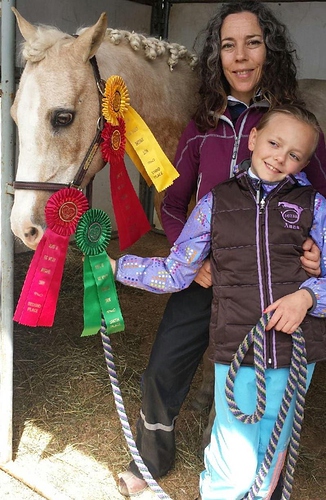Ok, I will try one last time since many seem confused:
I come from a background where “educational flatwork” serves as the foundation for all other riding disciplines (in my case, it ended up being endurance and fox-hunting, other childhood lesson friends went into the jumpers or reining). In my experience, this emphasis on fundamentals is essential, but I believe we need to make it more accessible.
Currently, the Intro guidelines listed in the purpose section and collective gaits can seem a bit daunting for newcomers.
I had assumed that my approach—starting kids without reins until they have truly stable hands and a secure seat—was fairly standard. However, it seems there might be a disconnect between this teaching philosophy and the official USDF guidelines and that as a result young riders like my lesson kiddos are not the “primary audience” for such tests. (I get that!)
However, I think we should also consider introducing an easier entry point for young riders and beginners (if we think Dressage is such an important foundation to everything else - or do we not think that?), allowing them to engage with dressage concepts without feeling overwhelmed. This could foster a more inclusive environment and encourage more riders to explore the discipline.
Since the current Intro tests are not meant for beginners (apparently?), someone who gives it a try will score low (and so they should). As an adult, I understand that I might score in the 50s when taking my green bean to a schooling show and be very happy that we went around and stayed in the ring! 
But I think it is a bit different with very young students. No matter how many times you tell children that assessment is important and an opportunity for growth, scoring very low (and receiving technical feedback beyond their ability and age-level comprehension) can be discouraging and counterproductive from a pedagogical standpoint. When young riders receive low scores, it often leads to frustration and diminished confidence, which can deter them from wanting to continue in the sport. We should perhaps consider how we can use the tests as learning opportunities that motivate and inspire growth.
I agree it is crucial to create an environment where mistakes are seen as part of the learning process. By providing constructive - understandable - feedback and focusing on the positives, we can help our young riders develop their skills without feeling defeated by their scores.
I do agree that children should not be pushed too early into the show ring and that focus should be on building a strong foundation, enjoying the learning process, and fostering a genuine love for riding, rather than solely on immediate results. However, all other children activities (from softball to piano) do have “competition” as part of their learning environment and this is what children and their parents expect.
Barns can obviously provide that by staging their own schooling shows and it would help, in the interest of consistency, than rather than having “everything under the sun” at those shows in terms of expectations there were clear standards of what beginners new to Olympic disciplines should achieve in their very first - non-leadline - “educational flatwork” tests. (think UPSC Standards of Proficiency).
I was under the - apparent misconception ? - that designing well thought-out tests was the purview of a more educated body - like the USDF - rather than individual barn owners.
Other countries’ federations have designed various Shetland and pony level “dressage” tests with clear guidelines that are meant to set the foundation for a reasoned growth in the discipline. Why not here?
(Obviously I can - and do - use those European pony tests at my barn, but my reason for starting the thread was my assumption that I am not the only lesson barn instructor facing the same dilemma).
Or do we think there is no need? Are we currently happy about about the state of youth participation in educational flatwork/dressage? Do we feel there is a need for more well-prepared children entering this discipline (and other Olympic disciplines), or are we content with the current numbers and level of preparedness?
While we certainly see a number of very talented young riders at shows, I can’t help but wonder if there’s room for growth.
How can we make dressage more approachable while still emphasizing its importance?




 ).
).